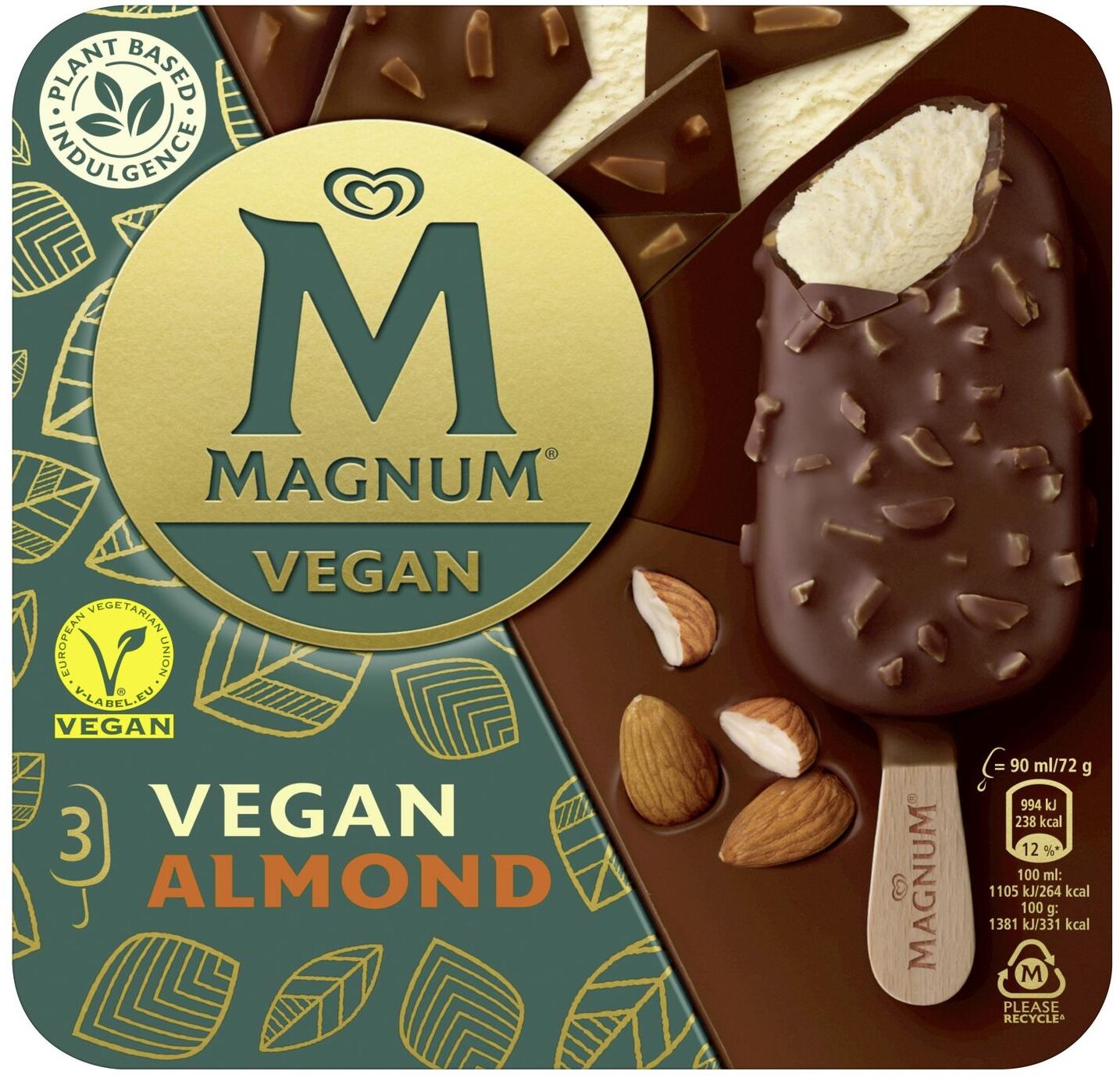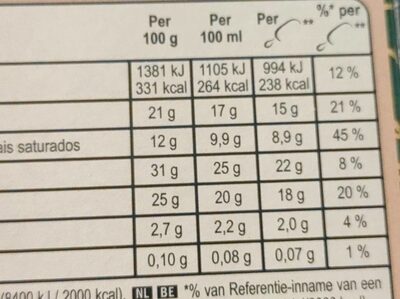Vegan Almond Ice Cream - Magnum - 216 g
Aquesta pàgina del producte no està completa. Podeu ajudar a completar-la editant-la i afegint-hi més dades a partir de les fotos ja disponibles, o fent-ne més amb l'aplicació de androide o iPhone / iPad. Gràcies!
×
Algunes de les dades d’aquest producte les ha proporcionat directament el fabricant Unilever France.
Codi de barres: 8714100658499 (EAN / EAN-13)
Nom comú: Vanilla vegan ice cream coated with chocolate couverture with almonds
Quantitat: 216 g
Empaquetament: Plàstic, en:Box, Cartó, Film, en:Frozen, de:Green dot, de:Produkt, en:Sac de transport, en:Sachet, fr:Boîte en carton
Categories: Aliments i begudes amb base vegetal, en:Dairy substitutes, Postres, Aliments congelats, Postres congelats, Sorbets i gelats, en:Plant-based ice creams, en:Plant-based ice cream bars
Etiquetes, certificacions, premis:
Lliure de gluten, Vegetarià, Vegà, Unió Vegetariana Europea, Unió Vegana Vegetariana Europea, Punt verd, Mantega de cacau pura, Aliança Tropical, en:Europäische Vegetarier-Union, en:Europäische Vegetarier-Union Vegan, en:Grüner Punkt, en:Sans gluten, en:Vegetarisch



Enllaç a la pàgina del producte en el lloc oficial del productor: https://www.magnumicecream.com/uk/produc...
Botigues: Carrefour, Eroski, Alcampo, Woolworths, Tesco, Coles
Països on es va vendre: Austràlia, França, Alemanya, Espanya, Regne Unit
Matching with your preferences
Altres dades
Preparació: Pour une dégustation encore plus onctueuse de votre crème glacée, sortez-le quelques minutes avant de servir.
Condicions de conservació: À conserver entre -25°C et -18°C
Servei al client: Magnum Relation Consommateurs, Unilever France, 20 rue des Deux Gares 92842 Rueil-Malmaison Cedex
Report a problem
Fonts de dades
El fabricant Unilever France utilitza Equadis per transmetre automàticament dades i fotos dels seus productes.
Producte afegit per neptuno
Última modificació de la pàgina del producte per macrofactor.
La pàgina del producte, també editada per alia, archanox, ayecptn, charlesnepote, date-limite-app, ecoscore-impact-estimator, foodvisor, grumpf, inf, itsjustruby, kiliweb, mauriceka, moon-rabbit, openfoodfacts-contributors, org-unilever-france-gms, packbot, quechoisir, roboto-app, scanbot, shisma, spotter, thaialagata, wriya, ysfitnessde, yuka.UjVrRkw1d1p2TWNOcFBadXgwMlAyZjkrNUtldFptM3RBc3djSVE9PQ, yuka.sY2b0xO6T85zoF3NwEKvlm5DTobcvjzJFg7vixWl-crSIZjPPfJQ25KjDKs, yuka.sY2b0xO6T85zoF3NwEKvlmVBVtzj_h_aJT_4oleKz4aqCZrTOehs_LeqK6g, yuka.sY2b0xO6T85zoF3NwEKvlmdfUorCjCrqCCD6hEzV7NnUDKf0Zuhc7bj9Pag, yuka.sY2b0xO6T85zoF3NwEKvlnBtDuD_syzDbCDhtGSNwe2NPLbhP_pX6Zrab6s.













